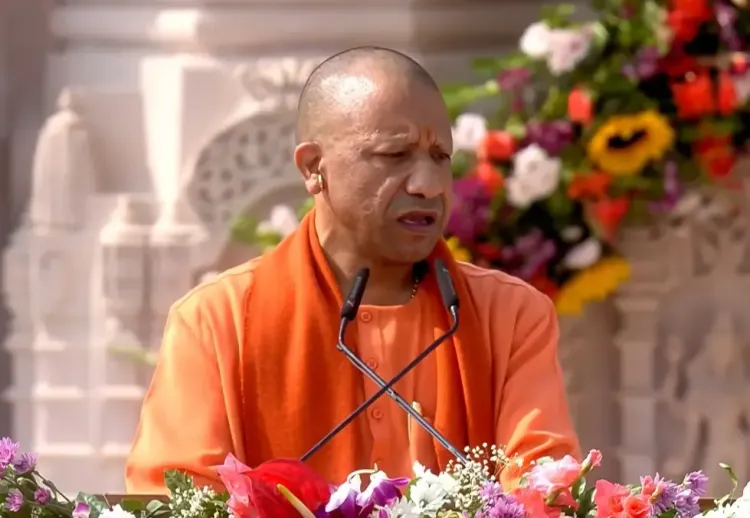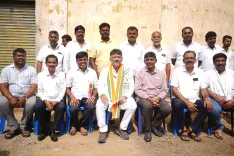Is the Ram Temple 'Dhwajarohan' a New Era?

Synopsis
Key Takeaways
- The Dhwajarohan Utsav signifies a new era.
- The saffron flag symbolizes India's cultural and religious ethos.
- Significant contributions from devotees are acknowledged.
- The event marks completion of the Ram Temple construction.
- It represents the dedication of countless individuals to the movement.
Ayodhya, Nov 25 (NationPress) The Chief Minister of Uttar Pradesh, Yogi Adityanath, stated on Tuesday that the 'Dhwajarohan Utsav' at the Ram Janmabhoomi Temple signifies the commencement of a new era. He dedicated this significant event to the unwavering devotion and sacrifices of those who dedicated their lives to this cause.
Speaking to a large crowd at the temple grounds after the flag hoisting ceremony led by Prime Minister Narendra Modi and RSS chief Mohan Bhagwat, CM Yogi extended a warm welcome to all the 'Ram devotees' and honored those committed to erecting a temple for Lord Ram in Ayodhya.
He remarked, 'The Dhwajarohan Utsav at Shri Ram Janmabhoomi Temple is not a poornahuti of a yagya but a significant beginning of a new era.'
He continued, 'This magnificent temple of Lord Shri Ram epitomizes the faith, pride, and self-esteem of 140 crore Indians. I express my deepest gratitude to all the karmayogis who played a part in the construction of this grand temple.'
CM Yogi emphasized that this sacred day honors the relentless dedication and struggles of revered saints, warriors, and Shri Ram devotees who devoted their lives to this movement.
Regarding the sacred 'Dhwaj', he stated, 'The saffron Dharma Dhwaj raised atop the temple symbolizes Dharma, dignity, and the essence of truth, justice, and national duty. It also represents the vision of a Viksit Bharat.'
Earlier, PM Modi and RSS chief Mohan Bhagwat led the 'Dhwajarohan Utsav' at the Ram Janmabhoomi Temple by hoisting a specially-designed sacred saffron flag atop the temple.
This ceremony holds profound cultural and spiritual significance for devotees across India.
The flag, designed for the Ram Temple, measures 22 feet in length and 11 feet in width. Crafted by a parachute specialist from Ahmedabad, Gujarat, it weighs between 2 to 3 kilograms and is engineered to withstand high altitudes and strong winds. The flag features the Sun symbol, representing Lord Rama's Suryavanshi lineage and divine brilliance. It is embellished with images of the Kovidara tree, Sun, and Om, and its saffron hue symbolizes fire, the rising sun, sacrifice, and dedication.
This event marks a significant milestone in the ongoing cultural renaissance centered on Ayodhya, with leaders asserting that the flag symbolizes not only religious devotion but also India's enduring civilizational ethos, and it signifies the completion of the temple's construction.









